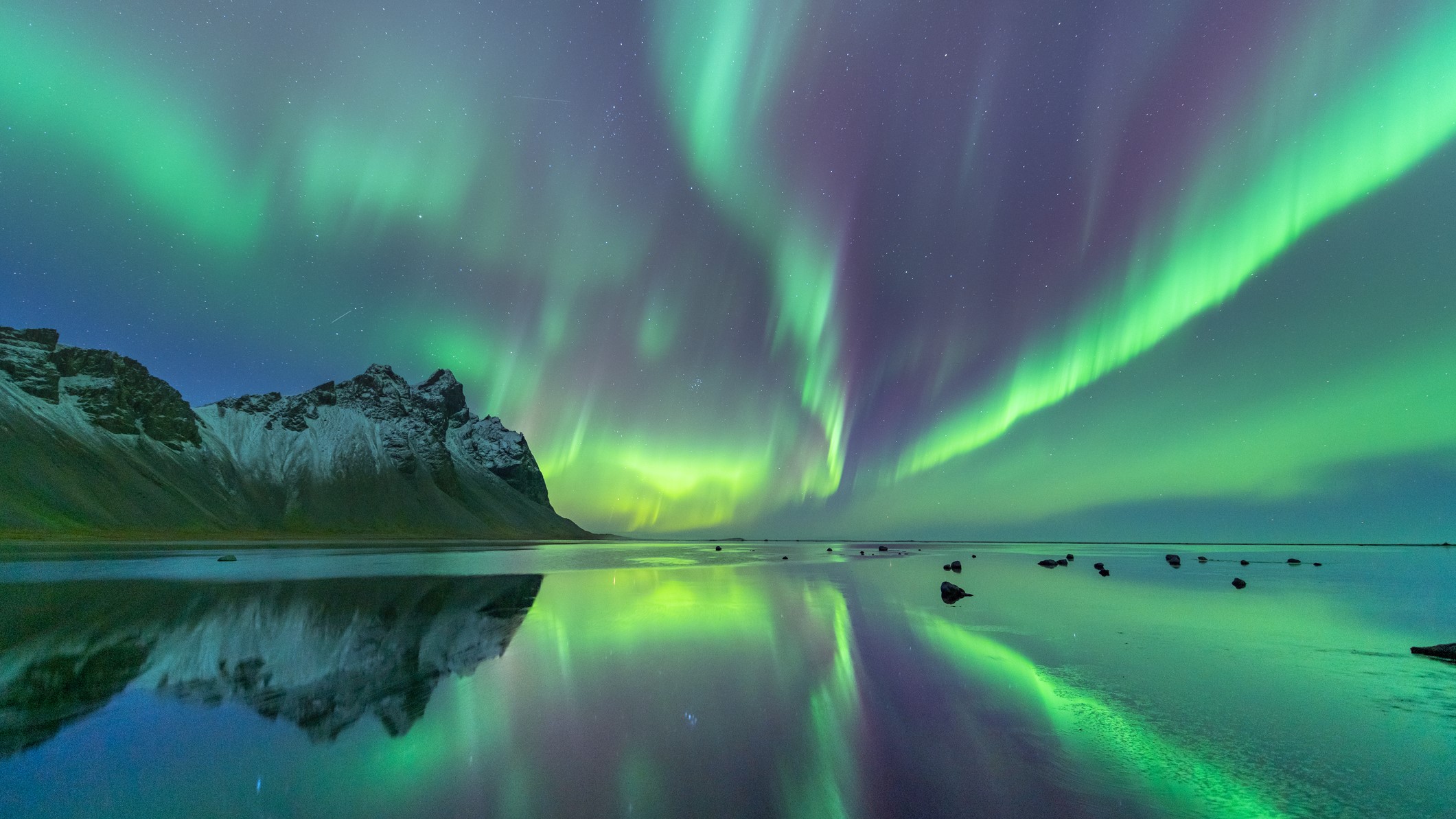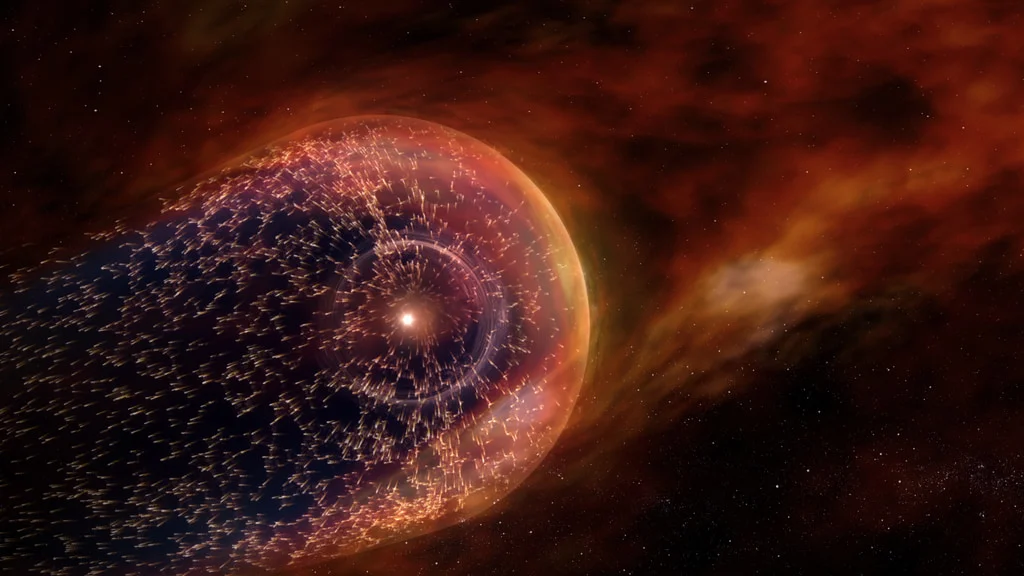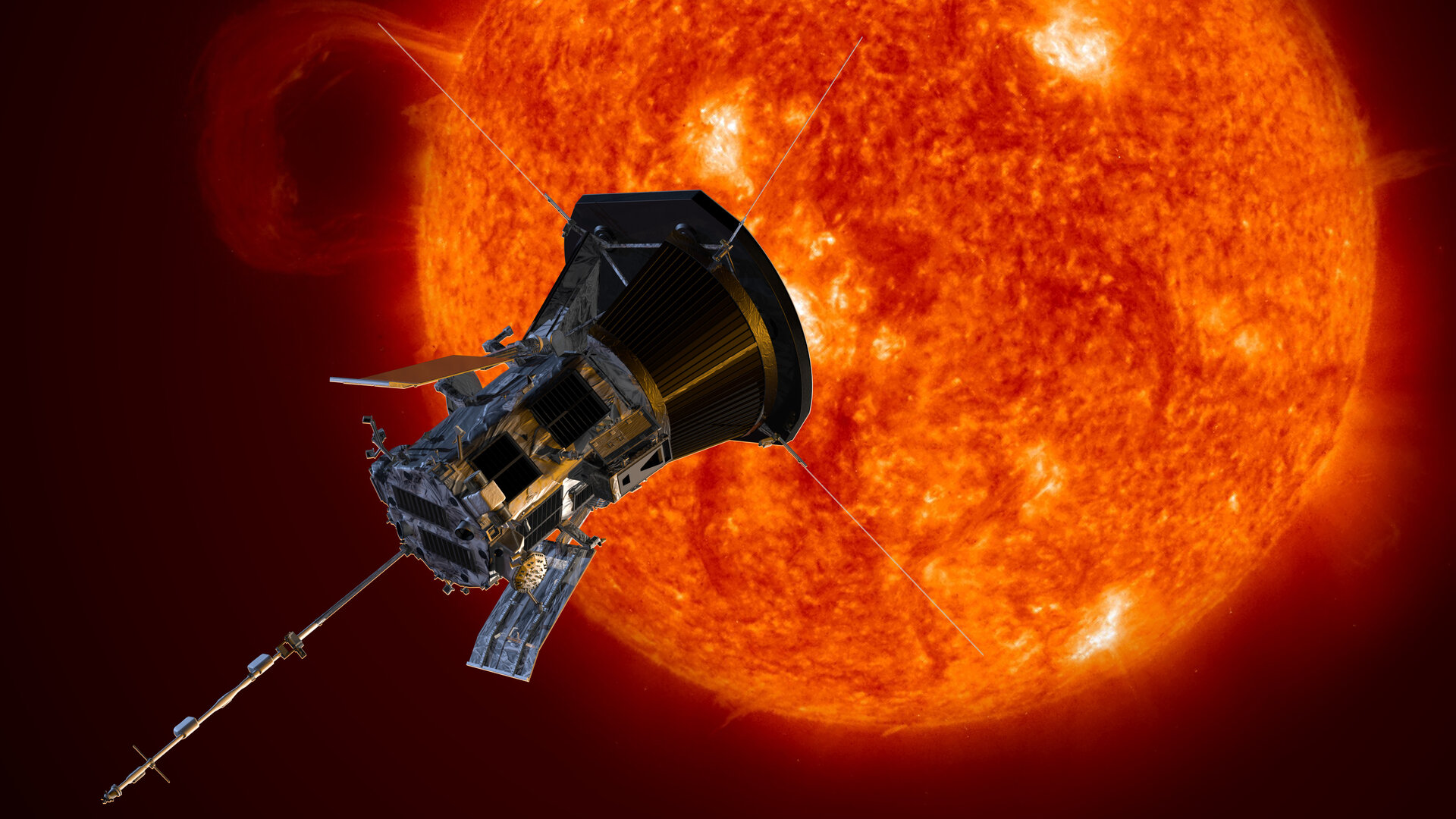Auroras, also known as the Northern Lights (aurora borealis) or Southern Lights (aurora australis), are stunning displays of light that occur in the night sky near the Earth’s poles. These mesmerizing phenomena are caused by the interaction of charged particles from the sun with Earth’s atmosphere.
The Science Behind Auroras
- Solar Wind: The sun emits a continuous stream of charged particles known as the solar wind. When this solar wind reaches Earth, it interacts with the planet’s magnetic field.
- Magnetic Field: Earth’s magnetic field acts as a protective shield, deflecting most of the solar wind particles. However, some particles can penetrate the field and enter the atmosphere.
- Atmospheric Interaction: As the charged particles collide with gases in the Earth’s atmosphere (primarily oxygen and nitrogen), they excite the atoms. When these excited atoms return to their ground state, they release energy in the form of light.
- Colors: The specific color of an aurora depends on the type of gas involved and the altitude of the collision. Oxygen atoms typically produce green and red auroras, while nitrogen atoms can produce blue and purple hues.
Types of Auroras
- Discrete Auroras: These are the most common type of aurora and appear as curtains or arcs of light.
- Diffuse Auroras: These are more diffuse and less structured than discrete auroras.
- Coronal Mass Ejections (CMEs): Large-scale solar eruptions can produce particularly intense auroras that can be seen at lower latitudes.
Observing Auroras
The best places to observe auroras are near the Earth’s poles, in regions known as the auroral ovals. These ovals can expand or contract depending on solar activity. While auroras are most commonly seen during the winter months, they can occur at any time of year.
Would you like to know more about specific auroral displays, the best places to see them, or the history of aurora observations?



